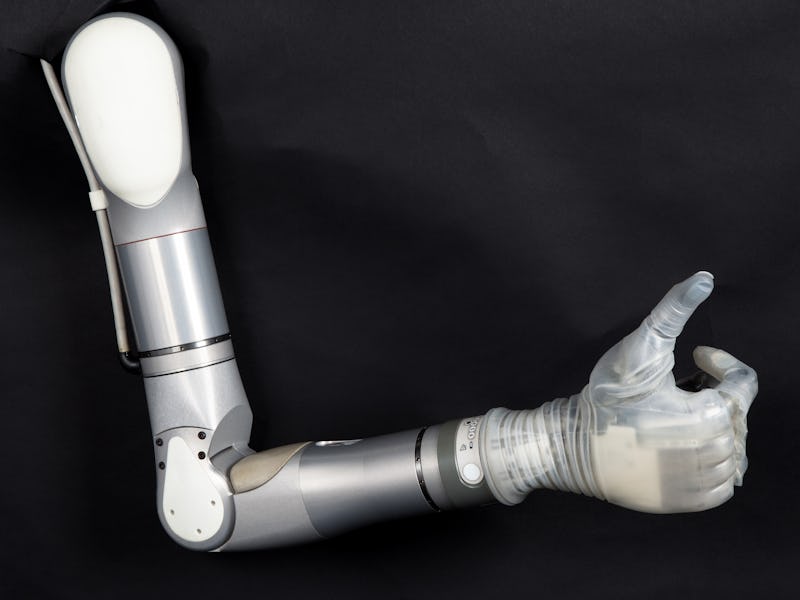Mobius Bionic's LUKE Arm Is Straight Out of 'Star Wars'
Mobile enough to scratch your back, dextrous enough to hold a grape.

In the Star Wars universe, when your dad chops off your hand with a light saber, you can have a life-like prosthetic attached in minutes to take its place. But in the real world, replicating the 60-odd muscles and bones in the complicated structure of the human arm is difficult — but the appropriately-named LUKE arm is getting pretty close to Rebel Alliance standards.
Mobius Bionics announced the LUKE arm on July 8, in partnership with the DEKA Research and Development Corporation. The biggest challenge of creating a lifelike arm is replicating the complicated and subtle interactions between all of the arm’s moving parts in a natural way, but LUKE, which stands for Life Under Kinetic Evolution, gets closer than most previous designs. It’s the first prosthetic arm approved in the U.S. Food and Drug Administration’s new “integrated prosthetic arm category,” and it will be available commercially in late 2016.
“Up to this point, design in prosthetic arms has been limited to incremental changes,” Dean Kamen, president of DEKA, says in a press release. “We developed the LUKE arm to change the game for amputees — creating an innovative, integrated system that offers greater functionality and independence to our wounded warriors and other amputees.”
The arm allows disabled people to do things that others take for granted, like lifting groceries from the floor to the table, moving while holding a glass of water, and scratching as much of your back as humanly possible yet never quite reaching the itch.
Here’s someone demonstrating the cool hand, LUKE, by picking up a bunch of eggs (we’re assuming they’re hard boiled).
The money behind it, unsurprisingly, is from the military. LUKE was funded by DARPA’s Revolutionizing Prosthetics program and other military cash infusions. Work on the arm started in 2006, five years into the war in Afghanistan and three years into the war in Iraq, as military scientists worked toward “creating a prosthetic with near-natural control” for wounded soldiers, the press release says.
According to the Department of Veterans Affairs six percent of the military’s wounded soldiers have lost a limb, and the total number of veterans using prosthetics and related products from the VA has increased more than 70 percent since 2000, which means thousands of veterans will benefit from more advanced and effective prosthetics.
While prosthetic technology hasn’t developed enough to make brain-controlled, finger-waggling hands a commercial reality, LUKE is a nice middle ground.
Depending on need, the arm can be installed at the radial (mid forearm), humeral (mid upper arm), or the shoulder. Each of the joints can work independently, and the hand has preprogrammed grips, complete with a sensor that provides grip force feedback. The force sensor lets users hold things as fragile as a single grape and substantially improves their dexterity.
Gentle enough to handle the fragile skin of a grape.
Mobius Bionics is part of Segway inventor Kamen’s forays into healthcare robotics. While the Segway is mostly a silly novelty reserved for police departments with overinflated budgets and Silicon Valley tech bros, Kamen has an impressive list of medical innovations among his more than 440 patents around the world.
Robotics technology is going to make being a human much, much better, and hopefully it will continue to make life better for those affected by war. Until the world decides it has had enough of violence, advanced prosthetics will be a large part of the conversation.